Cabo Verde
Destination - AtlanticCape Verde is one of the essential stops during an Atlantic circuit in catamaran. All those who are lucky enough to go there literally fall under the spell of this unique archipelago. You can now sail there without launching into an Atlantic trip, thanks to the catamaran charter companies!
Logbook
The Cape Verde archipelago is situated around 300 miles west of Senegal. Swept by a prevailing north-easterly wind which blows very steadily at between 15 and 20 knots, these islands (10 in total, 9 of which are inhabited, not counting several small uninhabited islands) offer an average temperature of 28°C for the air and 24°C for the water, all the year round... They are volcanic in origin and reveal varied and characteristic relief, from sand dunes blown here over time from the Sahara, to the mountains, such as the Pico do Fogo Gordo (2829m), a volcano which last erupted in 1995, and which hides wooded, lush vegetation. But the greater part of the archipelago is cruelly lacking in water... In the south, we find the Sotavento islands (Brava, Fogo, Santiago and Maio), and in the north, the Barlavento islands (Boa Vista, Sal, São Nicolau, Santa Luzia, São Vicente and Santo Antão).
Under the thumb of Portugal since its ‘discovery’ in 1456, Cape Verde has been independent since 1975. You will find a unique atmosphere here, a mixture of Africa, South America, and Southern Europe, lost in the middle of the Atlantic. Cape Verde and its inhabitants will welcome you with open arms, to discover their culture, their music, their coffee, and the grogos,the local rum, accompanied by the songs of the unforgettable Cesaria Evora, (the barefoot diva, whose music is so wonderfully nostalgic), and so many other hidden riches...
The numerous readers of this magazine who have stopped here on their Atlantic circuit speak about it with a tremor in their voices. Something always happens in Cape Verde, and you either literally love or detest it; there are no half measures! And if you do go there, don’t forget to eat a ‘Catchoupa’ for Multihulls World’s editor-in-chief (it’s a stew based on maize, beans, vegetables, manioc, sweet potatoes, banana, marrow and meat or fish)...
Beyond the encounters, Cape Verde is also a world class windsurfing spot, and people come from afar to enjoy its waters with their dense fish population, both for fishing and diving. You can now charter catamarans here.
Itinerary
One to two weeks will allow you to enjoy this archipelago to the full. Departure is generally from Mindelo, on the island of Sao Vicente, but it is always possible to organise departures from another island, as no less than four international airports now allow you to reach the archipelago (Sal – Santiago – Boa Vista and Sao Vicente).
The north-easterly wind blows steadily and allows you to visit all the islands in the northern group in two weeks; the direction of rotation finally has very little influence on the cruise..
Not to be missed:
You will of course love the salt marshes on the island of Sal and the beaches of Santa Maria, the anchorage at Murdeira (on Sal), discovering the sandy island (Boa Vista), diving on the small desert island at Sal Rei, discovering the wreck of the Cabo Santa Maria dating from 1968, or watching the turtles lay their eggs (only in July-August-September on Sal, Boavista, and Maio, in the south), the protected bird reserves on the small islands of Razo and Branco, and of course the numerous treks in the superb valleys on the various islands (for example, the Canto de Faja valley, or on Santo Antao, with scenery worthy of the Andes)… Over and above the good sailing, the wild anchorages, very different from what you are familiar with, Cape Verde will offer you a commodity which has become rare these days: authenticity!
Practical info
Getting there:
Flights from Paris and Lisbon with TACV, the national airline, or TAP or Air Europa. To get from one island to another, you can either use the TACV aeroplanes, or those belonging to Alcyonair. Otherwise, you will have to fall back on the ferries. But beware, the ferries serve also, and even especially, for transporting goods, and only visit the islands once or twice a week. Booking essential.
Weather:
Dry season: from November to June.
So-called ‘rainy’ season from July to October… But the climate in Cape Verde is very strongly influenced by the winds coming from the Sahara, responsible for the extreme aridity and the long periods of drought... In other words, the rainy season is more of a damp season, with rare rainfall.
The trade winds blow with the steadiness of a metronome from the end of November to February... From 15 to 20 knots, to delight sailors!
Formalities:
Visa essential to enter Cape Verde. It can be very easily obtained from a consulate, and costs 45 euros for an individual, 56.80 euros for a family.
Official language:
Portuguese, spoken: Creole.
English and French allow you to be understood almost everywhere.
Money:
Cape Verde Escudo, value: 100 esc = 1 euro
Not to be missed:
Diving, surfing, windsurfing, fishing…and the encounters with the Cape Verdeans, who are really very welcoming.
Destinations offered by
View all the destinations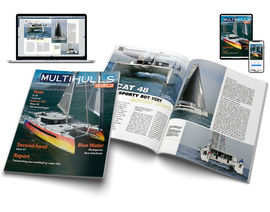
 Discover the 2025 winners!
Discover the 2025 winners! 
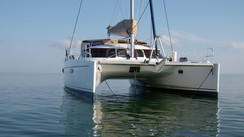
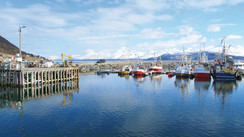
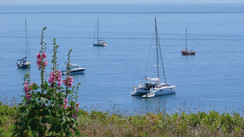
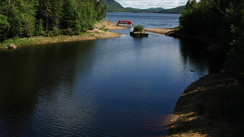
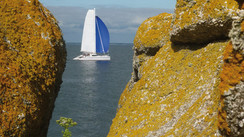
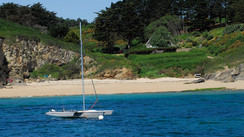






What readers think
Post a comment
No comments to show.